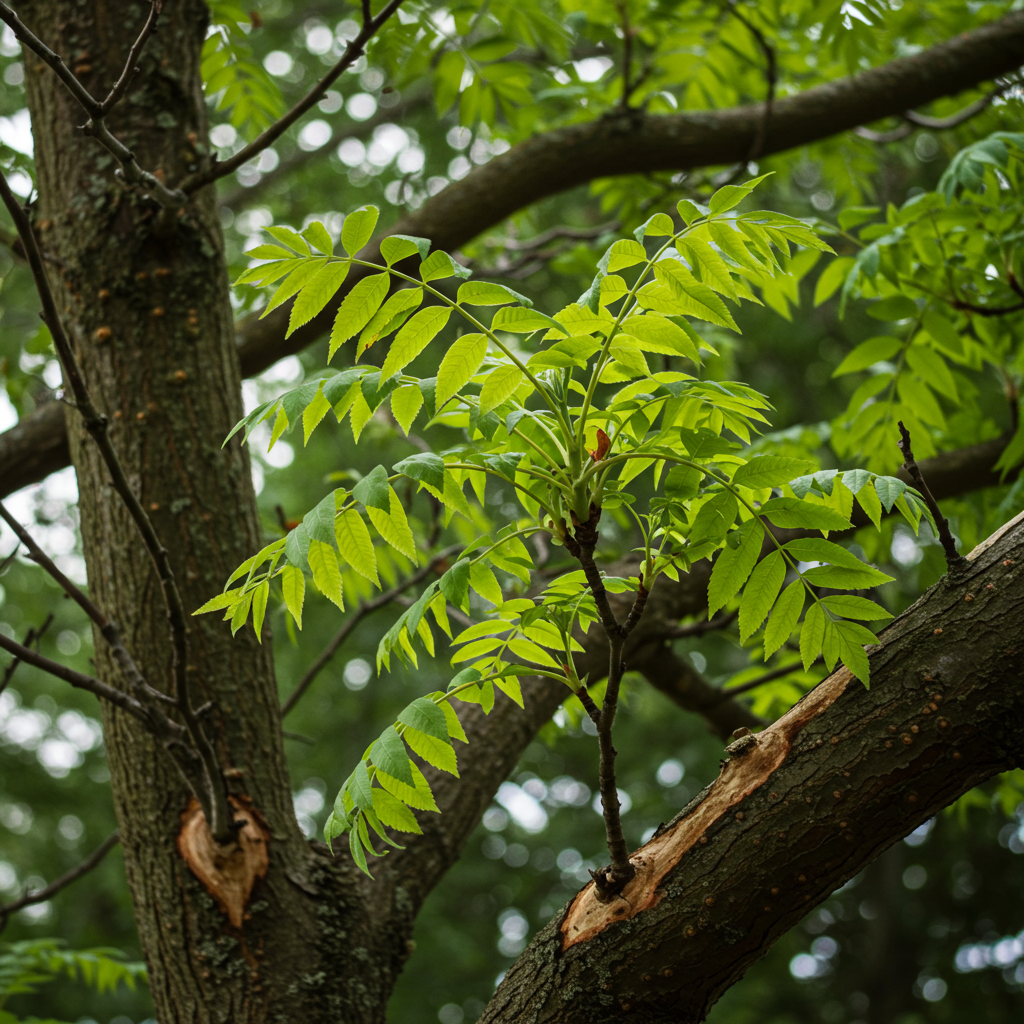A Glimmer of Hope: Ash Trees Are Evolving Resistance to Deadly Dieback Disease
Ash dieback, caused by the devastating fungal pathogen Hymenoscyphus fraxineus, has swept across Europe since the 1990s, reaching the UK in 2012. This aggressive disease impairs ash trees’ ability to transport water, leading to withered leaves, crown dieback, and ultimately, the death of millions of trees. The predicted loss of up to 85% of Britain’s ash population has raised significant concerns about biodiversity loss, carbon release, and safety risks from falling trees.
However, groundbreaking research offers a much-needed ray of hope. Scientists have discovered compelling evidence that wild ash trees in the UK are rapidly evolving some level of genetic resistance to this killer fungus. This finding, described by researchers as “hope born out of the death of a lot of trees,” suggests the species may not face the near-total wipeout seen with Dutch elm disease.
How Are Ash Trees Developing Resistance? Natural Selection in Action
A detailed study published in the journal Science, led by researchers from the Royal Botanic Gardens, Kew, and Queen Mary University of London, provides the most detailed genetic picture of rapid evolution in the wild ever obtained.
The team analyzed the DNA of hundreds of European ash trees (Fraxinus excelsior) at a site in Marden Park, Surrey. Crucially, they compared the genetic makeup of 128 older adult trees that were established before the dieback outbreak with 458 young saplings that grew up exposed to the disease.
Because the fungus kills young trees much faster than mature ones – indeed, around 30% of the young trees at the site perished – the sapling population experienced intense natural selection. Only those with traits conferring some ability to survive the infection made it.
The genetic analysis revealed that thousands of specific gene variants previously linked to either increased resistance or vulnerability were significantly more common in the DNA of the surviving young trees. This demonstrated a clear genetic shift occurring within a single generation, driven by the selective pressure of the disease. It provides convincing genetic proof for Charles Darwin’s prediction that significant evolutionary change can result from the accumulation of many small genetic modifications.
Partial Resistance is Key, But Not Enough
While this discovery is incredibly promising, researchers caution that the resistance identified is currently partial, not complete. Each of the thousands of genetic variants contributes only a tiny effect to a tree’s overall ability to withstand the fungus. The accumulation of these subtle changes provides some defence, allowing more trees to survive their vulnerable sapling stage.
Experts believe that ash’s relatively high reproductive rate, with a single tree producing thousands of seeds, offers ample genetic variability for natural selection to act upon, giving it an advantage over species like the elm.
However, the rate of this natural evolutionary change may slow in the future as ash trees become scarcer, potentially reducing fungal spore production and thus lessening the selective pressure on young trees. Therefore, while natural selection offers a foundation for recovery, scientists agree it likely won’t be sufficient on its own to fully rescue the species quickly enough.
The Broader Impact of Ash Dieback
The widespread loss of ash trees has far-reaching consequences. As a keystone species, ash woodlands support over 1,000 species of invertebrates, mammals, and birds that rely on them for habitat. The dieback also leads to the release of stored carbon dioxide and diminishes the tree’s significant commercial value for timber. Furthermore, infected trees near roads and footpaths pose a safety threat as they weaken and fall. The estimated cost of the dieback in the UK alone is around £15 billion.
A Call for Intervention and Global Strategy
The ash dieback crisis highlights the vulnerability of native trees in an increasingly connected world. Globalization facilitates the rapid spread of new pests and pathogens that trees have not evolved defenses against. The threat is not confined to ash dieback; in North America, ash trees face devastation from the introduced emerald ash borer (Agrilus planipennis), and the potential overlap of these two threats could be catastrophic.
To help ash trees keep pace with these unprecedented challenges, human intervention is considered essential alongside natural evolution. Strategies include:
Selective Breeding Programs: Identifying and breeding the most resilient surviving trees to enhance resistance in future generations.
Protecting Existing Survivors: Safeguarding healthy or partially resistant ash trees to preserve valuable genetic diversity crucial for continued evolution.
Developing Genetic Tools: Creating DNA tests to quickly identify resistant saplings and adult trees for replanting and breeding efforts.
Cross-Breeding: Investigating the potential to breed European ash with highly resistant Asian ash species to create resilient hybrids.
- Supporting Natural Regeneration: Managing woodlands to allow young, potentially resistant trees to grow and thrive, protecting them from threats like deer grazing.
- www.newscientist.com
- www.theguardian.com
- www.bbc.com
- www.inkl.com
- www.sciencenordic.com
The discovery of evolving genetic resistance offers genuine hope for the long-term survival of ash trees. It underscores the power of natural selection and provides vital momentum for conservation efforts, emphasizing the need for a proactive, globally coordinated approach to protecting tree populations from the escalating threats of introduced pests and diseases.




